West Palm Beach, FL Pollen and Allergy Report for Summer 2023
Pollen Allergy Trends in West Palm Beach, FL
When is pollen lowest in West Palm Beach, FL?

May
Lowest month total PPM
Avg. PPM
When is pollen highest in West Palm Beach, FL?

April
Highest month total PPM
Avg. PPM
How does pollen in West Palm Beach, FL compare to Florida?
West Palm Beach has a higher average PPM than the state of Florida.
West Palm Beach yearly avg PPM:
Florida yearly avg PPM:
How does pollen in West Palm Beach, FL compare to the USA?
West Palm Beach has a higher average PPM than the USA.
West Palm Beach yearly avg PPM:
USA yearly avg PPM:
Is pollen worse this year in West Palm Beach, FL?
Spring 2023 was better than spring 2022.
Spring 2023 PPM:
Spring 2022 PPM:
Average PPM in West Palm Beach, FL
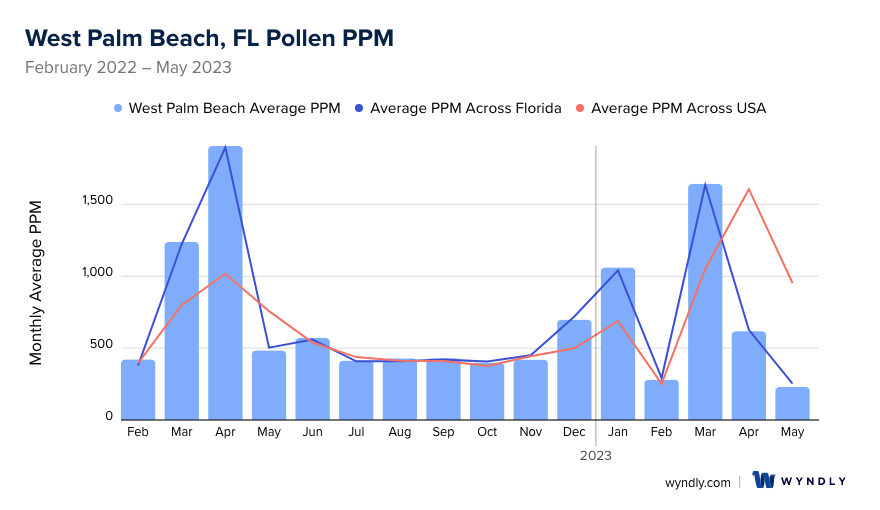
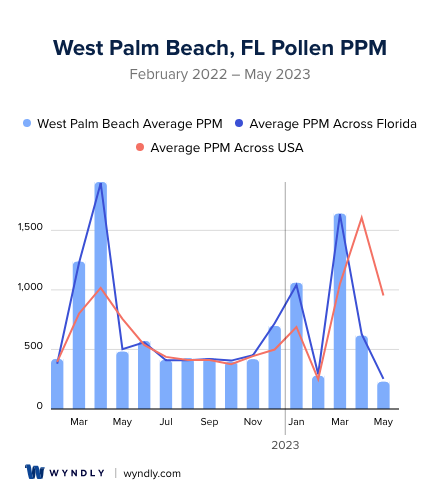
West Palm Beach, FL Pollen and Allergy Breakdown by Month
Grass
When is grass pollen highest in West Palm Beach, FL?
April has the highest grass pollen in West Palm Beach, FL with an average PPM of
When is grass pollen lowest in West Palm Beach, FL?
December has the lowest grass pollen in West Palm Beach, FL with an average PPM of
Tree
When is tree pollen highest in West Palm Beach, FL?
March has the highest tree pollen in West Palm Beach, FL with an average PPM of
When is tree pollen lowest in West Palm Beach, FL?
July has the lowest tree pollen in West Palm Beach, FL with an average PPM of
Weed
When is weed pollen highest in West Palm Beach, FL?
June has the highest weed pollen in West Palm Beach, FL with an average PPM of
When is weed pollen lowest in West Palm Beach, FL?
February has the lowest weed pollen in West Palm Beach, FL with an average PPM of
West Palm Beach, FL Pollen Monthly Breakdown by Pollen Type
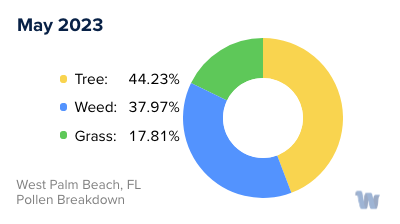
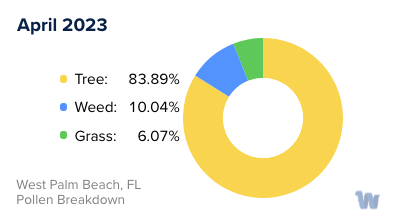
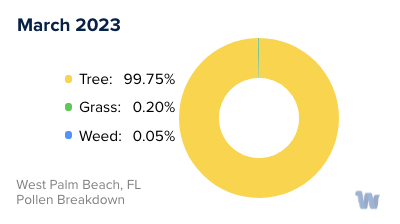
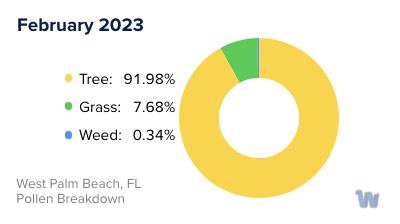
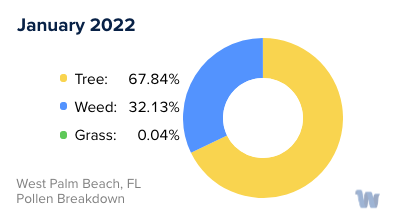
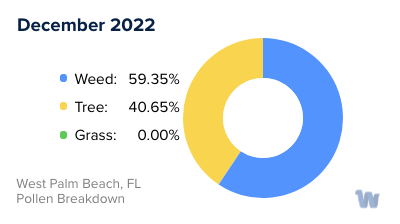
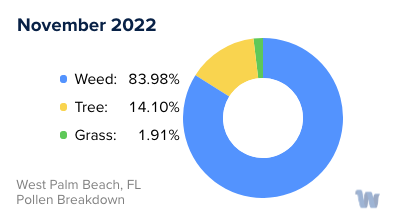
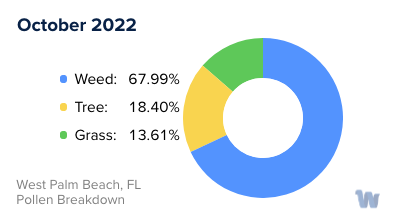
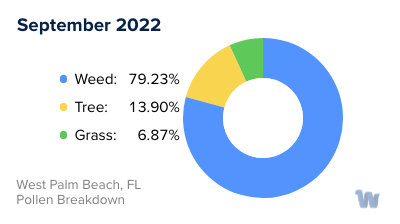
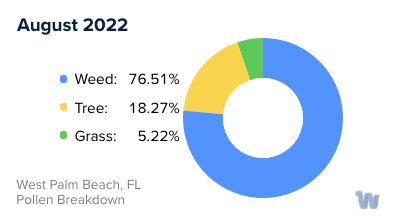
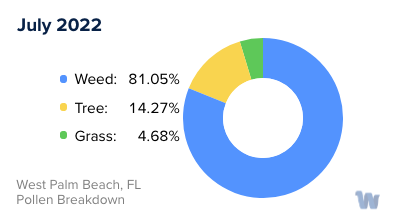
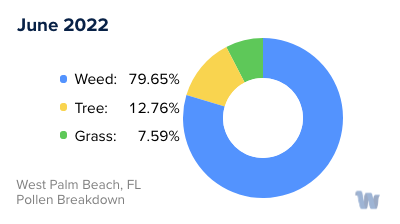
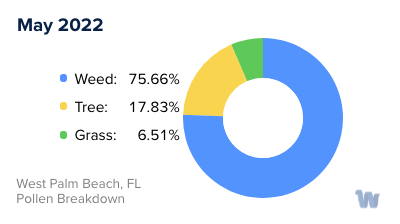
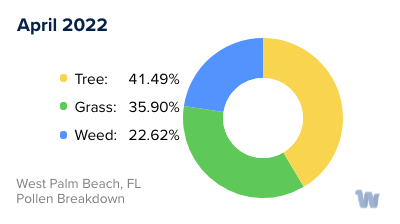
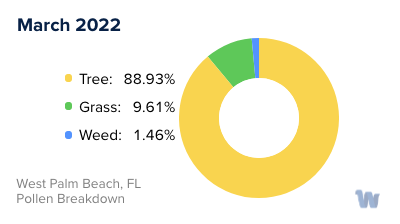
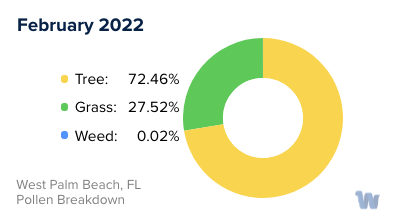
Pollen and Hay Fever in West Palm Beach, FL
In the charming city of West Palm Beach, Florida, where the ocean breeze is ever-present, pollen allergies and hay fever are not strangers to the residents. Pollen allergies, commonly referred to as hay fever or allergic rhinitis, arise when the immune system overreacts to pollen grains in the air.
There are several types of pollen that tend to affect the good people of West Palm Beach. Grass pollen is one of the culprits, and it usually peaks in the summer months. Bermuda grass and Bahia grass are common in the area, and they release pollen grains that can cause sneezing, itchy eyes, and a runny nose.
Tree pollen is another issue, and this typically begins in late winter and runs through spring. Oak, pine, and Australian pine are a few of the trees in West Palm Beach that produce pollen. Since these trees start pollinating early in the year, individuals sensitive to tree pollen may begin experiencing symptoms as early as February.
Lastly, let's not forget about weed pollen. This type of pollen is most prevalent in the fall. Ragweed is a common weed in Florida and is known to cause quite the stir among allergy sufferers.
It's important to note that in West Palm Beach, the pollen season can be prolonged due to the warm climate. The city's proximity to the ocean can sometimes bring relief, as the sea breeze can help to clear the air of pollen. However, on days when the wind blows inland, pollen levels can rise.
Being aware of the types of pollen and the seasons in which they are prevalent is essential for the residents of West Palm Beach to understand and anticipate their pollen allergies. The changing seasons bring with them the beauty of nature, but also the challenges of hay fever.


